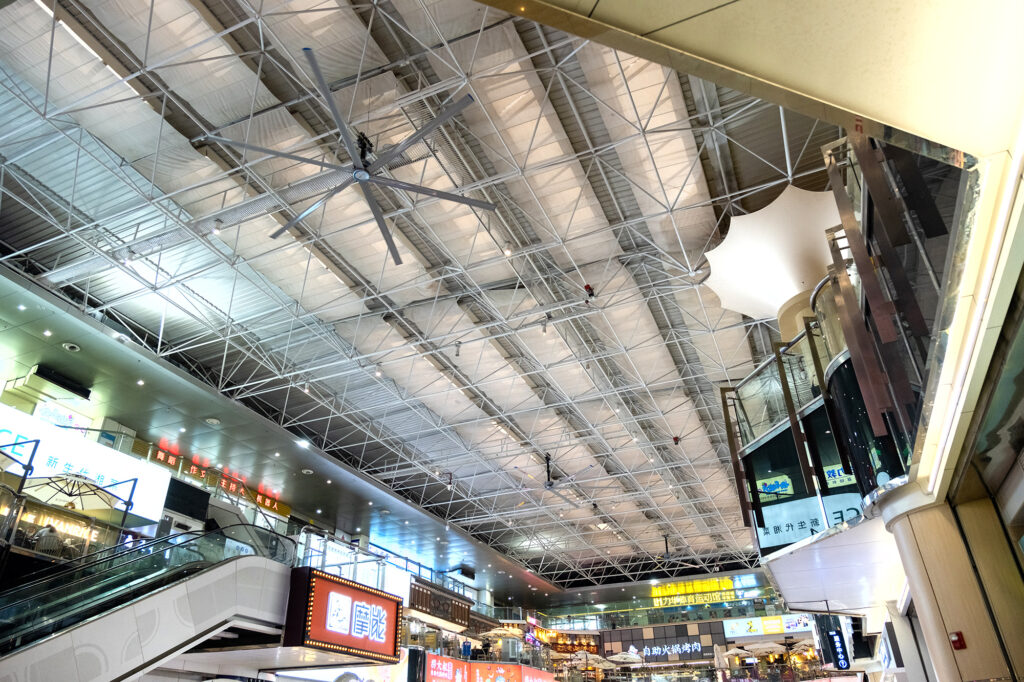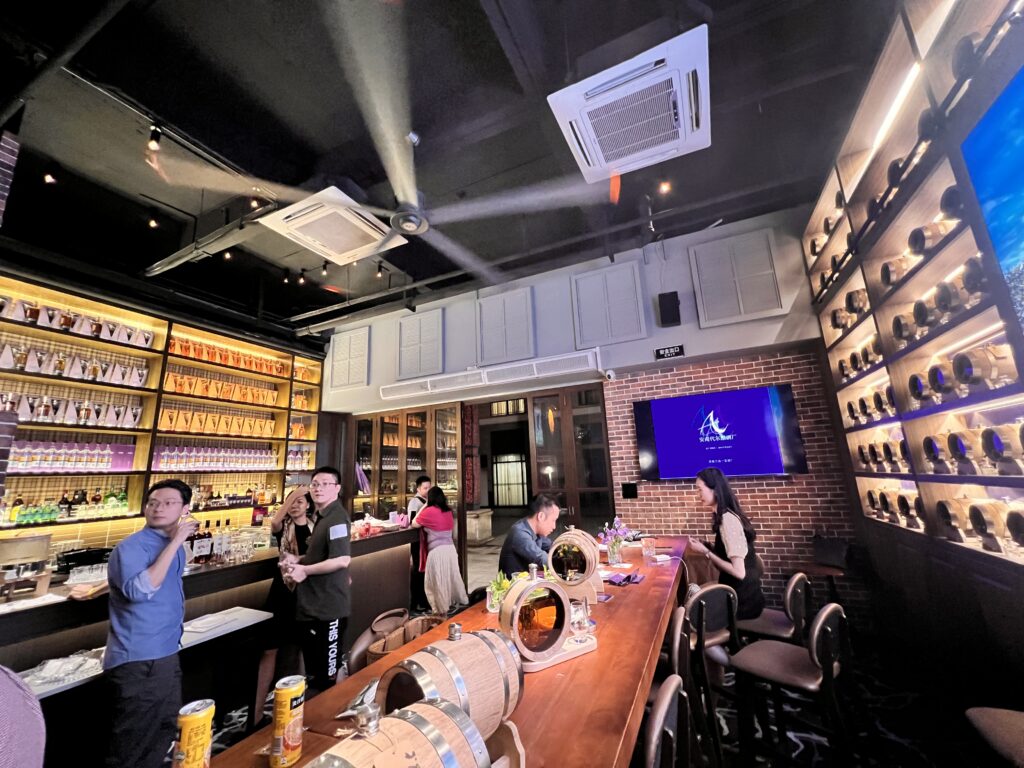The restaurants are highly pressured to control their cost of operation and the comfort with which they provide the meal. Since 25-40 percent of energy budgets are used on HVAC systems, cooling expenses can have a massive effect on profitability. Ceiling fans can be used to reduce HVAC load and, in this case, High Volume Low Speed (HVLS) systems, which circulate more air and enable a higher thermostat set point in restaurants, thus saving energy costs. These energy-saving restaurant systems are able to save 20-30% of HVAC and can pay back in less than a year (18-24 months), operating with annual savings of thousands of dollars. This will not only save on the utility bills but will keep the restaurant owners on the path of sustainability goals, including ENERGY STAR compliance.RTFANS has been providing solutions for more than two decades and has helped hundreds of restaurants save on their energy bills. How do we need these fans due to such energy requirements? How will they save us money, and what is their true effect?
High Energy Demands in Restaurants
Restaurants have among the greatest energy consumption of a commercial environment, and the kitchen department, the peak demand of the place is made by the dining areas and the maximum number of customers. Industry data show that U.S. restaurants incur an annual electricity and natural gas bill of 2.90 and 0.85 per square foot, respectively. This translates into 43.9 kilowatt-hours (kWh) of electricity or 147.6 cubic feet of natural gas per square foot per year, and HVAC systems are a major contributor.
This demand has a few causes. Overs, grills, and fryers produce high levels of heat, and in most cases, drip into eating spaces. The air conditioners are forced to work harder trying to move warm air trapped in high ceilings (10-20 feet). Peak meals offer the body heat and moisture that boost cooling requirements. They can increase utility bills in warm climates or during the summer months and strain tight budgets. Next, customer pressure on environmentally-friendly companies and environmentally-friendly standards like ENERGY STAR creates pressure on restaurants to reduce their carbon footprint and remain comfortable.

How HVLS Ceiling Fans Reduce HVAC Usage by 20–30%
HVLS ceiling fans cover a large area, and the ceiling fan blades are 8-24 feet tall and may travel up to 400,000 cubic feet per minute at low velocity (50-100 RPM). It creates a low wind that cools a space of up to 22,000 square feet using only one fan, making it appropriate in restaurant cooling systems. Their primary method is destratification, or warm air near ceilings and cold air near floors, so that everywhere in the dining is identically cold.
HVLS fans also create the illusion that spaces are 5-7°F cooler during summer, and that the thermostat can be set at a higher temperature (3- 5°F) without losing comfort. Each degree of saved energy will save 4 percent on average cooling costs. The fans recycle the warm air during winter, which saves 20-30 heating up. Overall, HVLS fans can save up to 30 percent or more energy in commercial buildings, including restaurants, through HVAC, providing them with energy efficiency equal to that of the industry.
These consumers consume less than 1.5 kW, a very small percentage of HVAC units or multiple smaller fans. The variable speed controllers enhance their performance by adjusting the volume of airflow based on the occupancy or weather. An example of this is the restaurant, which can slow down the fans during times when the restaurant is not at full capacity, consequently saving more energy. The installation of AMCA-certified fans will ensure proven performance that can be used to achieve standard requirements like ISO 50001 on energy management.
ROI and Payback Periods for HVLS Fans
The HVLS fans are financially appealing to invest in and pay back typically within 6 months to 2 years. The cost of each HVLS 12-20 foot will be between 5000 and 10000 dollars plus installation, but the energy saved will pay for itself in a short time.
HVLS fans will conserve 20-30 percent, or 580-870 per 1,000 square feet, in a 5,000-square-foot restaurant with an electric bill of 2,900 per 1,000 square feet. This translates to a savings of 2,900 to 4,350 full spaces each year, or 242 to 362 each month. ROI is also achieved after 3-5 years at a two-fan investment of 15000 dollars, but tends to decline faster in energy-consuming regions. Other restaurants will also save up to 35 percent, which will be recouped within less than two years.
The advantage of HVLS fans is that they can be serviced with minimum effort, like an annual clean of the blades that will last between 15 and 20 years. Their low operating cost (Less than $50/month per fan) and capacity to pass the ENERGY STAR requirements of efficient ventilating fans further contribute to their cost effectiveness, as restaurants can use the money to enhance their menu or employee staffing.

Example of Monthly Cost Savings
Consider a 4,000-square-foot informal dining restaurant with an annual electric bill of 11,600 (2.90/ sq ft). HVAC consumption will be reduced by 25 percent. Two HVLS fans totaling 16 feet at 12,000 will save 2,900 in annual -or 242 in monthly savings. The most savings can be realized during the peak summer periods when the fans are making more cooling loads. The net savings after ROI of more than five years are more than $14,500, with a low cost of operation of the fans. In this example, the industry average is used as a real-life scenario to illustrate that the decrease in HVAC costs in the dining areas can be turned into real dollar savings to the restaurant owner.
In other states, a fine-dining restaurant and a 6,000-square-foot dining hall installed with three HVLS fans saved four times the amount of energy used (4,000/year). The 333 monthly savings allowed the restaurant to make more environmentally friendly upgrades, which made it better known as a sustainable company.
FAQ: Common Questions About Ceiling Fans in Restaurants
HVLS fans provide a cooling effect, allowing thermostats to be raised by 3-5 degrees Fahrenheit, which would save 4 percent of energy per degree, and would reduce HVAC load by 20-30 percent.
Payback periods range between 6 months to 2 years, and a 2030 percent energy cost reduction will lead to a rapid payback period.
Yes, the HVLS fans are energy-efficient ceiling fans are the ceiling fans are quiet, can save energy, which is appropriate in restaurants, is provide good coverage to wide areas.
A 4,000-square-foot restaurant can save 200-400 a month by cutting HVAC expenses, depending on the weather and frequency of use.
The number of restaurants generally consumes massive power because of the kitchens and the density of the dining rooms, and this also demands proper cooling. Ceiling fan restaurant systems, including the HVLS, are also 20-30% lower in cost than the HVAC cost and generate monthly savings ranging between 200 and 400 dollars with a payback period of 18-24 months. They may include the sustainability objectives such as ENERGY STAR compliance, since it can be integrated with the HVAC systems and enable the restaurants to reduce their carbon footprint and increase the comfort of their customers.
HVLS fans should be considered by the operators of the restaurants to reduce their expenses and go green. RTFANS is an organization that is 2 decades old, and it develops restaurant-specific cooling systems to maximize your energy efficiency. Call us now and see how our ceiling fans will add value to your bottom line and sustainability- your business and customers are worth it.
